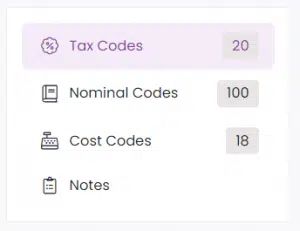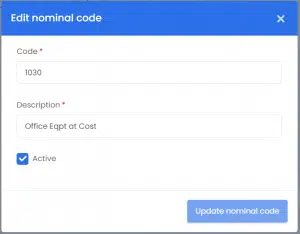Business Unit Category
Add an email signature
Coding Restrictions
Create new Business Unit
Custom Fields on Line Items
Customised labels
Date formating
Default delivery address
Division Management
Editing Email Templates
How to hide cost codes
Invoice email forwarding – Microsoft 365
Pros and Cons of Using Zahara’s Inbuilt Email Service vs. Your Own SMTP
SMTP & Email Sending
T&C on your PO Template
Invoice Processing Help Category
Auto reject supplier invoices
Auto rejecting of invoices issue
Finding an order or invoice
How to create a credit note
Invoice email forwarding – Microsoft 365
Invoice export colours
Invoice Inbox
Invoice List View
Invoice matching
Invoice Processing Explained
Month end cut offs
Negative Order Balance
Setting up Autopilot
Supplier Matching
Waiting for a GRN
Purchase Orders Category
Adding a product to an order
Adding documents to an order
Bulk importing orders
Close Orders Automatically
Closing an order
Copy PO to Buyer
Creating a Purchase Order
Deleting a PO
Duplicate Order Prevention
Editing an order
Finding an order or invoice
GRN an Order – Learn with this Guide
Grouped Purchase Orders
Import Line Items
Negative Order Balance
PO Template Editing
Product Centric Buying
Purchase Order Numbering
Purchase Order PDF
Purchase Order Prefix
Purchase Requisition Number
Quick Create a Purchase Order
Send PO to Supplier
Supplier order acceptance
What is a Purchase Order?
To access coding, click the Business menu and Coding Lists. This incorporates Tax Codes, Nominal Codes and Cost Codes.
Tax Codes
If you reclaim back your expenditure taxes you may want to set up tax codes. We allow for as many tax codes to be created as required. If you don’t reclaim your tax, you may want to set one code of zero, with a 0% rate and set it as the default.
If you are in Europe and have VAT or Australia/Canada with GST then you will probably re-create the same tax rates as in your accounts system. If connected to a finance system, you will want to sync codes into Zahara.
Nominal Codes
Often referred to as Ledger codes or Account codes, nominal codes are the same thing to Zahara. This is an accounting term, to allocate your spend to the correct coding. You can import or sync nominal codes. We recommend integrity with your finance system and only import or sync codes that already exist. Avoid originating any codes in Zahara that are orphaned from your finance package.
Cost Codes
Cost Codes are functionally arbitrary but allow you to further allocate your spend. You have your Nominal Code, for example, – “5050 – Stationary” but in addition you could have Cost Codes for paper, pens or envelopes. You can create whatever you need. This will largely be decided by your finance system and the Cost Code will be named to suit and aligned with an already existing coding set – ie Xero Tracking Category or Sage Department.
On the left hand side of the Coding Lists page, you are able to switch between the codes that you have permission to view. In addition to these tabs is the new Notes page.

The codes are displayed in a table with relevant columns. You are able to sort the lists by each column either ascending or descending by clicking the name of the column. You are also able to filter the lists by either typing in the text box – which searches through all columns, or displaying only active, or inactive codes.
The notes tab allows you to view any changes made to the coding lists – who made the changes, what they changed and when. At the bottom of the page, you are also able to add custom notes to save any information you need for the future. These notes can be deleted to clear clutter, but can always be re-activated to ensure a complete audit trail at all times.
The process of creating a new code is largely the same for the three different types. First click the New Code button next to the title and a box will appear, allowing you to populate information for your new code.
For Cost and Nominal codes, you enter the code itself, as well as its description. You can also decide whether or not to bring this code across to all your business units.
For Tax Codes, you enter the code, its name and percentage. You can also decide whether it is created active or not and whether it is the default tax code for your business. The default tax code will be marked on the list with a star icon.
You are also able to create codes through importing a CSV file, or syncing with additional accounting software such as Sage, Xero, MYOB or QuickBooks Online.
Importing
To import codes, click the arrow next to the New Code button and select Import Codes. This will take you to the import page. Hit upload to bring your CSV into Zahara, or download our template for populating yourself.
You can then choose which column in your CSV maps to which field in the list. A preview on the right hand side will guide you. You can then choose whether or not to bring these codes across to all of your business units. Hit Import Codes and you’re all done.
Syncing
The final way to create codes in Zahara is to sync with your existing accounting software. To do this, just hit the Sync button in the top right and wait for the synchronisation result to appear.
You can edit your codes on a line by line basis, or in a batch.
To edit on a line, simply click the edit button to the right of the code. This will bring up a screen allowing you to change, and save any fields in the code.

Alternatively, if you tick boxes for multiple codes on the left hand-side you can edit multiple by using the Update button. Choose which fields you want to change and what you want to change them to. Then hit Update Codes.
Finally, you can delete your codes by ticking them on the left hand-side and using the delete button in the top right corner. Deleting codes, unlike notes is permeant and irreversible. The note itself however, denoting the deletion, is permeant so you have a record of what was deleted and when.
I am unable to edit or update codes/I can’t see the edit button? You likely do not have the Update permission for the code in question. Discuss with your tenancy admin to have this permission added to your account.
I can’t create/upload codes? You may not have the ‘Create’ permission for the code in question. This is needed to both create manually, and upload codes. Discuss with your tenancy admin to have this permission added to your account.